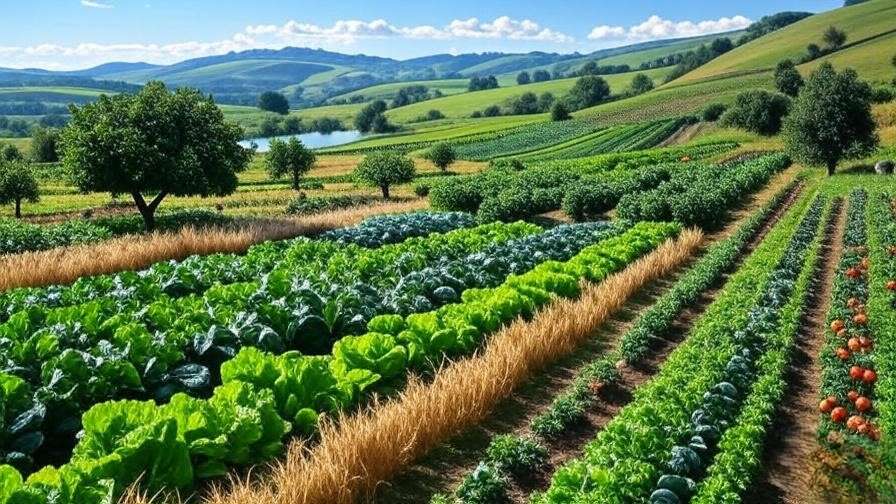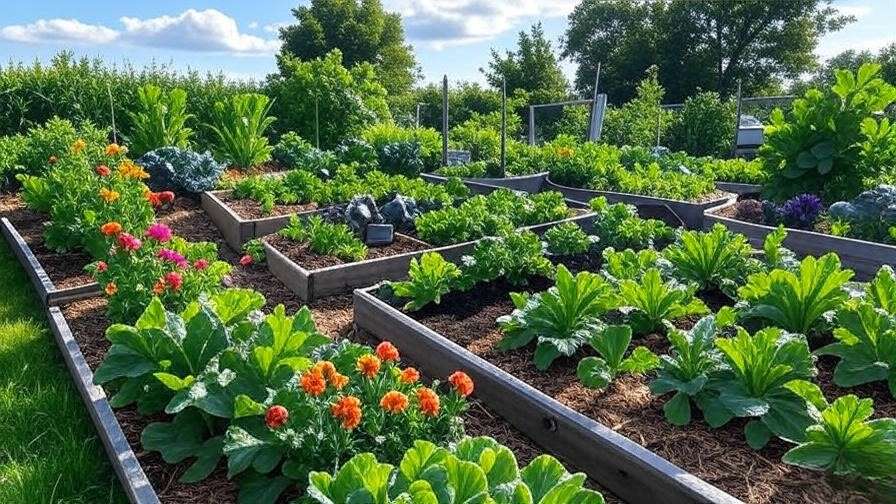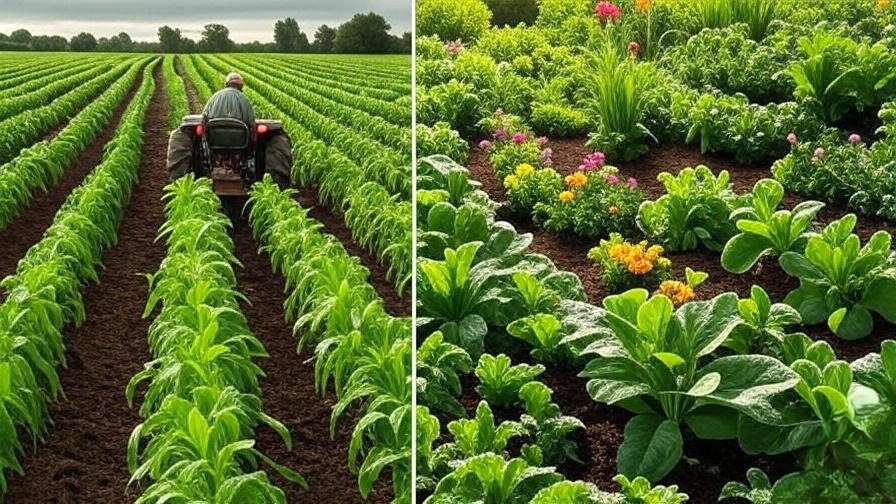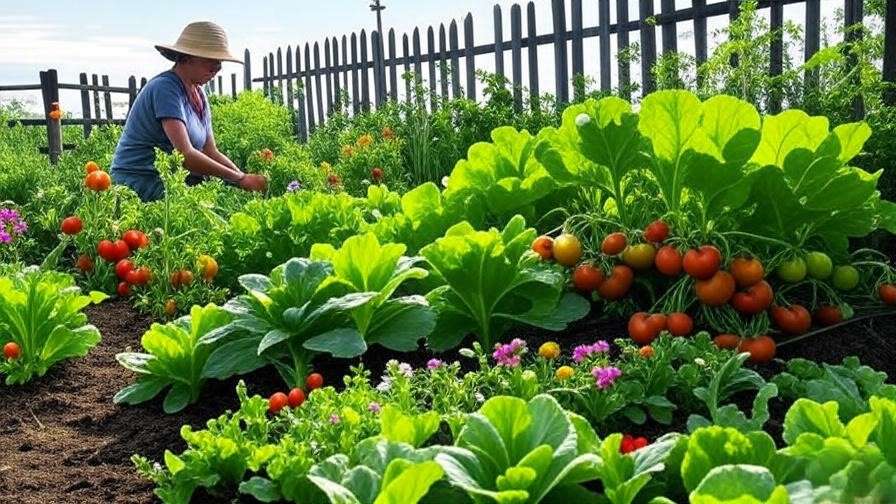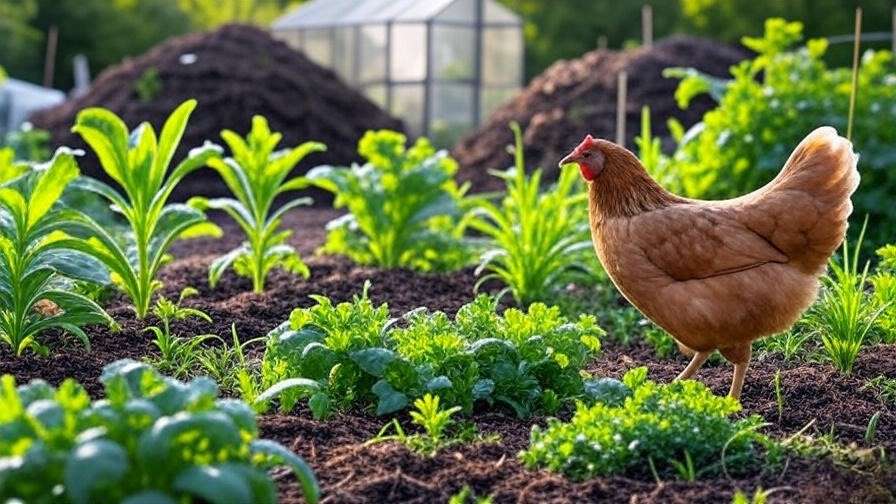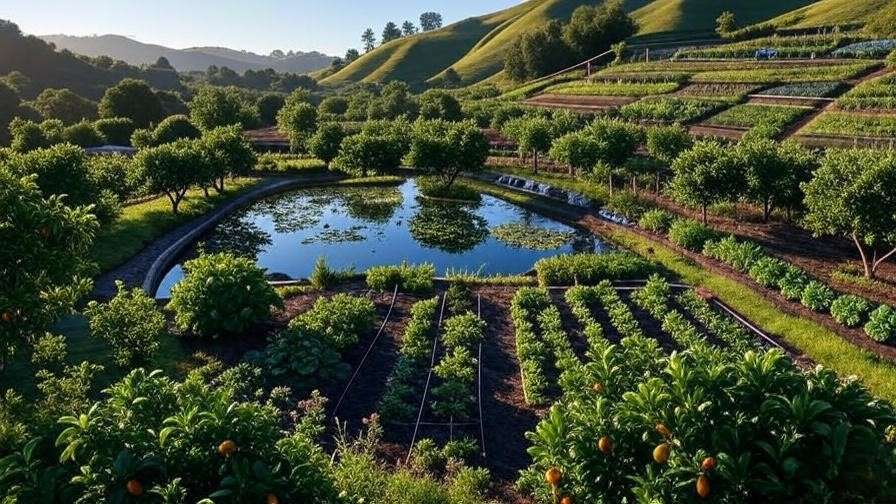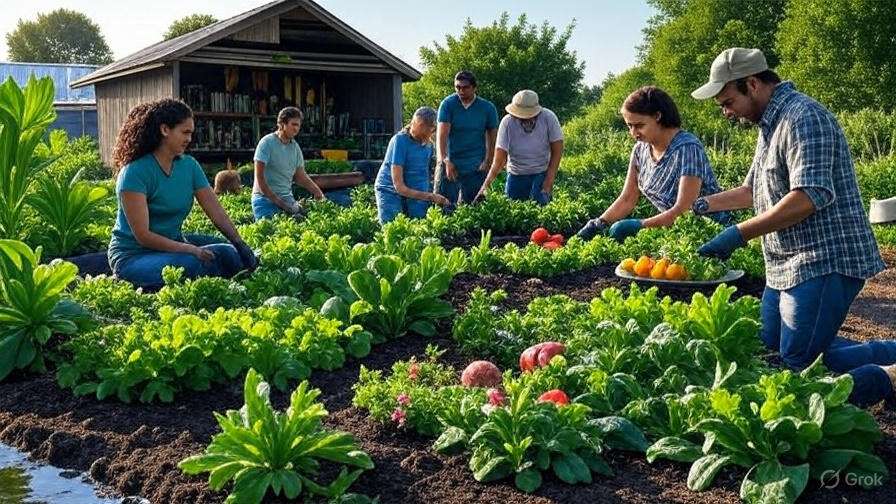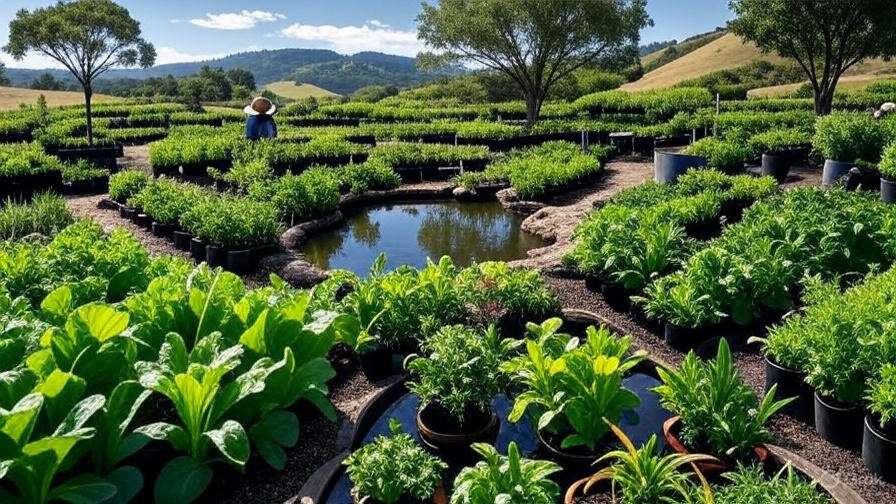Picture a farm where the soil grows richer each year, crops thrive without chemicals, and every harvest supports both your wallet and the planet. This isn’t a dream—it’s the reality of Mark Shepard permaculture, a revolutionary approach to farming that’s reshaping agriculture worldwide. Mark Shepard, a visionary farmer and author, has pioneered a system that blends permaculture principles with practical, scalable solutions to create resilient, sustainable farms. Whether you’re a small-scale grower or managing acres of land, Shepard’s methods offer a blueprint for transforming agriculture while addressing pressing challenges like soil degradation, climate change, and food security. In this guide, we’ll explore how Mark Shepard permaculture works, why it’s a game-changer, and how you can implement it to build a thriving, eco-friendly farm.
Who Is Mark Shepard and Why His Permaculture Approach Matters
Mark Shepard’s Background and Expertise
Mark Shepard is a trailblazer in regenerative agriculture, best known for his book Restoration Agriculture and his work at New Forest Farm in Wisconsin. With decades of hands-on experience, Shepard has turned his 106-acre farm into a living example of sustainable farming. His approach integrates permaculture—a design system rooted in mimicking natural ecosystems—with practical strategies for profitability and scalability. Shepard’s expertise stems from years of trial, error, and innovation, making him a trusted authority for farmers seeking to break free from conventional, input-heavy agriculture. His farm produces diverse yields, from hazelnuts to apples to pasture-raised livestock, all while improving soil health and sequestering carbon.
The Core Philosophy of Shepard’s Permaculture
At the heart of Mark Shepard permaculture is the idea of working with nature, not against it. Unlike traditional farming, which often depletes soil and relies on monocultures, Shepard’s approach mimics the structure of natural ecosystems like savannas or woodlands. Key principles include:
- Perennial crops: Using long-lived plants like trees and shrubs to reduce labor and inputs.
- Agroforestry: Integrating trees with crops and livestock for mutual benefits.
- Regenerative design: Prioritizing soil health, biodiversity, and carbon sequestration.
This philosophy resonates with farmers facing rising costs, unpredictable weather, and environmental regulations, offering a sustainable path forward.
Understanding Mark Shepard Permaculture: Key Principles
Mimicking Natural Ecosystems
Shepard’s permaculture designs emulate the resilience of natural landscapes, such as savannas, where diverse plants and animals coexist in balance. By creating farm systems that mirror these ecosystems, farmers can achieve greater stability and productivity. For example, a savanna-like farm might combine fruit trees, grazing animals, and cover crops, each supporting the others. This approach boosts biodiversity, enhances soil fertility, and makes farms more resilient to drought, pests, and climate shifts. Studies show that biodiverse systems can increase crop resilience by up to 20% compared to monocultures (FAO, 2023).
Perennial Crops Over Annuals
One of Shepard’s boldest ideas is shifting from annual crops like corn or wheat to perennials like hazelnuts, chestnuts, or berries. Annual crops require yearly replanting, heavy tillage, and chemical inputs, which degrade soil over time. Perennials, on the other hand, establish deep root systems that improve soil structure, retain water, and sequester carbon. At New Forest Farm, Shepard’s hazelnut orchards produce consistent yields with minimal maintenance, proving that perennials can be both profitable and sustainable. For farmers, this means lower costs and less labor over time, with harvests that can last decades.
Agroforestry and Silvopasture
Agroforestry—combining trees, crops, and livestock in one system—is a cornerstone of Shepard’s permaculture. Silvopasture, a subset of agroforestry, integrates grazing animals with tree crops, creating a symbiotic relationship. For instance, at New Forest Farm, pigs graze under chestnut trees, controlling weeds and fertilizing the soil while the trees provide shade and fodder. This multi-layered system maximizes land use, reduces inputs, and diversifies income. Research from the USDA indicates that agroforestry systems can increase farm revenue by 15–30% through combined yields of timber, crops, and livestock.

The Problem Mark Shepard Permaculture Solves
Challenges in Conventional Agriculture
Modern farming faces serious hurdles: soil erosion, chemical dependency, and economic instability. According to the USDA, U.S. farmland loses 1.7 billion tons of topsoil annually, costing farmers billions in productivity. Heavy reliance on fertilizers and pesticides—global spending on which reached $69 billion in 2022—further degrades ecosystems and raises costs. Climate change exacerbates these issues, with droughts and floods threatening yields. For farmers, these challenges create a cycle of high inputs, diminishing returns, and environmental harm.
How Shepard’s Approach Addresses These Issues
Mark Shepard permaculture offers a way out. By prioritizing perennials and agroforestry, Shepard’s methods rebuild soil health, reducing erosion by up to 90% compared to conventional tillage (NRCS, 2024). His systems eliminate the need for synthetic inputs, cutting costs significantly—some farmers report savings of 50% or more on fertilizers and pesticides. Additionally, diverse crop and livestock systems buffer against market fluctuations and climate risks, ensuring long-term profitability. For example, a farm using Shepard’s methods can sell nuts, fruit, and meat, creating multiple revenue streams.
Real-World Impact
New Forest Farm is a testament to Shepard’s success. Since adopting permaculture, the farm has restored degraded land, increased biodiversity, and achieved consistent profits. Other farmers following Shepard’s model report similar results. For instance, a hazelnut farmer in Oregon using Shepard’s agroforestry techniques saw yields double within five years while cutting input costs by 40%. These real-world examples highlight the scalability and practicality of Shepard’s approach, making it accessible to both small and large operations.
Step-by-Step Guide to Implementing Mark Shepard Permaculture
Step 1: Assess Your Land and Climate
Before adopting Shepard’s methods, evaluate your farm’s unique conditions. Test soil for pH, nutrients, and organic matter using kits from local extension services. Check your USDA hardiness zone to select suitable crops. Analyze water availability and topography for effective water management. Tools like permaculture design software (e.g., Permaculture Design Course Toolkit) can help map your land and plan layouts inspired by Shepard’s keyline design principles.
Step 2: Select Perennial Crops and Trees
Choose perennials that thrive in your region. For temperate climates, Shepard recommends hazelnuts, chestnuts, apples, or native berries like elderberries. Research disease-resistant varieties to minimize risks. For example, hybrid hazelnuts from the University of Minnesota’s breeding program are well-suited for cold climates. Source plants from reputable nurseries to ensure quality. LSI keywords: perennial crops, regenerative farming, agroforestry species.

Step 3: Design Your Agroforestry System
Plan your farm layout using Shepard’s keyline design, which optimizes water flow and soil fertility. Space trees to allow sunlight for understory crops or pasture. For example, plant rows of fruit trees 20–30 feet apart, with grasses or legumes in between. Incorporate water harvesting techniques like swales to capture runoff. A sample layout might include chestnut trees, grazing lanes for cattle, and berry bushes as a secondary crop. Use tools like Google Earth or drone mapping for precision.
Step 4: Integrate Livestock
Livestock are critical to Shepard’s systems, providing natural fertilization and weed control. Pigs, cattle, or chickens can graze under trees, reducing maintenance costs. For example, pigs under hazelnut trees at New Forest Farm control weeds while cycling nutrients back into the soil. Start with a small herd and monitor their impact on vegetation. Ensure proper fencing and rotational grazing to prevent overgrazing. LSI keywords: silvopasture, livestock integration, regenerative grazing.

Step 5: Monitor and Adapt
Permaculture is a dynamic process. Regularly observe soil health, crop growth, and biodiversity using tools like soil moisture sensors or wildlife surveys. Adjust your system based on what works—perhaps swapping a struggling crop for a better-suited one. Shepard emphasizes “farming in nature’s image,” so let your observations guide long-term decisions. Keep records of yields and costs to track progress.
Benefits of Adopting Mark Shepard Permaculture
Environmental Benefits
Mark Shepard permaculture delivers profound environmental advantages. By prioritizing perennial crops and agroforestry, these systems rebuild soil organic matter, with studies showing increases of up to 1% annually in well-managed systems (NRCS, 2024). This enhances soil’s water-holding capacity, reducing irrigation needs by 20–30% compared to conventional farms. Agroforestry also sequesters carbon at rates of 1–4 tons per acre per year, helping mitigate climate change (FAO, 2023). Additionally, diverse plantings attract pollinators and beneficial insects, boosting biodiversity and reducing pest pressure naturally. For example, New Forest Farm hosts over 200 plant species, creating a thriving ecosystem that supports wildlife and stabilizes the local environment.

Economic Benefits
Shepard’s approach is as profitable as it is sustainable. Perennial systems reduce input costs significantly—farmers adopting agroforestry report spending 40–60% less on fertilizers, pesticides, and fuel compared to monoculture operations. Diversified income streams, such as selling nuts, fruits, timber, and livestock, buffer against market volatility. For instance, a 10-acre hazelnut orchard can yield $5,000–$10,000 annually after maturity, while also supporting grazing income. Over time, these systems require less labor due to their low-maintenance design, freeing farmers to focus on marketing or expansion. Shepard’s own New Forest Farm demonstrates this, generating consistent revenue from multiple crops without reliance on external inputs.
Social and Community Benefits
Beyond the farm, Mark Shepard permaculture fosters community resilience. By producing diverse, nutrient-rich foods, these farms strengthen local food systems, reducing dependence on industrial supply chains. Community-supported agriculture (CSA) models, inspired by Shepard’s methods, connect farmers directly with consumers, building trust and economic stability. Moreover, permaculture farms often serve as educational hubs, inspiring others to adopt sustainable practices. For example, New Forest Farm hosts workshops that have trained hundreds of farmers, sparking regional movements toward regenerative agriculture. These ripple effects empower communities to tackle food insecurity and environmental challenges collaboratively.

Challenges and How to Overcome Them
Initial Investment and Time
Transitioning to permaculture requires upfront costs for trees, fencing, and infrastructure, which can deter some farmers. A 10-acre agroforestry system might cost $10,000–$20,000 to establish, depending on crop selection and land preparation. Additionally, perennials like hazelnuts take 3–5 years to produce significant yields. To overcome this, start small—plant a one-acre trial plot to test Shepard’s methods. Seek grants from organizations like the USDA’s Sustainable Agriculture Research and Education (SARE) program, which offers funding for regenerative projects. Cooperatives or crowdfunding can also offset costs, as seen in successful permaculture startups in the Midwest.
Knowledge and Skill Gaps
Permaculture demands a shift in mindset and skills, which can be daunting for farmers accustomed to conventional methods. Understanding keyline design, crop selection, and livestock integration requires learning. To bridge this gap, read Shepard’s Restoration Agriculture or enroll in online courses from platforms like Permaculture Design Hub. Local workshops or mentorships with experienced permaculture farmers can accelerate learning. Joining networks like the Savanna Institute provides access to resources, peer support, and expert guidance, ensuring farmers can apply Shepard’s principles effectively.
Market and Consumer Awareness
Perennial crops like chestnuts or elderberries may lack the market familiarity of corn or soybeans, posing marketing challenges. To succeed, focus on direct-to-consumer sales through farmers’ markets, CSAs, or online platforms. Educate consumers about the nutritional and environmental benefits of your crops—highlighting, for example, that hazelnuts are rich in healthy fats and sustainably grown. Storytelling, such as sharing your farm’s journey on social media, can build brand loyalty. Shepard himself emphasizes engaging communities through farm tours and workshops, which can turn customers into advocates for your permaculture products.
Expert Insights and Tips for Success
Advice from Mark Shepard
Shepard’s core mantra is to “farm in nature’s image.” In Restoration Agriculture, he writes, “The future of agriculture lies in systems that produce food, fuel, and fiber while regenerating ecosystems.” His advice to farmers is to observe their land closely and let natural patterns guide design. For example, if your land has a natural slope, use it to channel water into swales, as Shepard does at New Forest Farm. He also stresses patience—permaculture is a long-term investment that pays off through resilience and reduced costs.
Practical Tips for Beginners
- Start Small: Test Shepard’s methods on a small plot, such as a half-acre orchard, to gain confidence and minimize risk.
- Build Community: Join permaculture groups or online forums to share experiences and learn from others.
- Experiment and Observe: Try different crop combinations and monitor their performance, adapting based on what thrives.
Advanced Strategies for Experienced Farmers
For those ready to scale, integrate technology like soil sensors or drones to monitor large agroforestry systems efficiently. Explore value-added products, such as turning hazelnuts into oils or flours, to boost revenue. Partner with local restaurants or co-ops to expand markets for perennial crops. Shepard’s farm, for instance, supplies local businesses with chestnuts and pork, creating a robust regional food network.
Additional Elements for Implementation and Engagement
Practical Examples from New Forest Farm
To illustrate the power of Mark Shepard permaculture, let’s dive deeper into New Forest Farm’s operations. Spanning 106 acres in Wisconsin, this farm showcases a harmonious blend of hazelnut orchards, apple trees, berry bushes, and grazing livestock. One standout feature is Shepard’s use of keyline design, a water management technique that directs runoff into swales—shallow trenches that capture and store water for dry periods. This has allowed the farm to thrive even during droughts, maintaining yields when neighboring conventional farms struggled. Another example is the integration of pigs in silvopasture systems, where they graze under chestnut trees, naturally controlling weeds and cycling nutrients back into the soil. These practices have increased the farm’s soil organic matter by 2% over a decade, boosting fertility and water retention.
Scaling Mark Shepard Permaculture for Different Farm Sizes
One of the strengths of Shepard’s approach is its adaptability. For small-scale farmers with less than 5 acres, start with a diverse orchard of fruit trees and berries, paired with chickens for pest control and fertilization. A 1-acre plot could include 50 hazelnut trees, interplanted with raspberries and grazed by a small flock of poultry, generating $2,000–$5,000 in annual revenue once mature. For larger operations, such as 50+ acres, consider a full agroforestry system with timber trees (e.g., black walnut), nut crops, and rotational grazing. The Savanna Institute reports that large-scale agroforestry farms can achieve net profits of $10,000–$20,000 per acre after establishment, depending on crop mix and market access.
Tools and Resources for Success
To implement Mark Shepard permaculture effectively, leverage the following resources:
- Books: Restoration Agriculture by Mark Shepard provides a detailed roadmap for applying his principles. Other recommended reads include The Permaculture Handbook by Peter Bane.
- Courses: Online platforms like Permaculture Design Hub or Udemy offer courses on agroforestry and keyline design.
- Organizations: The Savanna Institute and Permaculture Research Institute provide free guides, webinars, and networking opportunities.
- Technology: Use soil testing kits (e.g., from SoilKit) to monitor nutrient levels and drones for aerial mapping of large farms.
- Funding: Explore USDA SARE grants or crowdfunding platforms like FarmRaise to offset startup costs.
Enhancing Marketability of Permaculture Products
Selling perennial crops like hazelnuts or elderberries requires creative marketing, as these products may be less familiar to consumers. Consider the following strategies:
- Direct Sales: Set up a booth at local farmers’ markets to educate buyers about the benefits of your crops. Highlight their sustainability and nutritional value—hazelnuts, for example, are high in protein and healthy fats.
- Value-Added Products: Process crops into high-margin goods, such as chestnut flour, berry jams, or walnut oil. These can command premium prices and appeal to health-conscious consumers.
- Storytelling: Share your farm’s permaculture journey on social media platforms like Instagram or X, using hashtags like #permaculture or #regenerativefarming to reach eco-conscious audiences.
- Community Engagement: Host farm tours or workshops, as Shepard does, to build trust and attract customers. A single workshop can generate $1,000–$2,000 while fostering community support.
Addressing Climate Change with Shepard’s Methods
Mark Shepard permaculture is uniquely positioned to combat climate change. Perennial crops and agroforestry systems act as carbon sinks, sequestering 1–4 tons of CO2 per acre annually, compared to 0.5 tons for conventional cropland (FAO, 2023). Deep-rooted perennials also improve soil structure, reducing erosion and enhancing resilience to extreme weather. For instance, during a 2018 drought in the Midwest, farms using Shepard’s methods maintained 80% of their yields, while nearby monoculture farms lost up to 50%. By adopting these practices, farmers contribute to global efforts to reduce greenhouse gas emissions while safeguarding their livelihoods.

Case Studies: Success Stories Inspired by Shepard
- Midwest Hazelnut Farm, Oregon: A 20-acre farm adopted Shepard’s agroforestry model, planting hazelnuts with rotational grazing. Within seven years, the farm reported a 50% reduction in input costs and annual revenues of $15,000 from nuts and livestock.
- Small-Scale Permaculture, Vermont: A 3-acre farm implemented Shepard’s principles, combining apple trees, berry bushes, and chickens. By year five, the farm was fully self-sustaining, generating $8,000 annually through CSA subscriptions and farmers’ market sales.
- Tropical Adaptation, Costa Rica: A farmer applied Shepard’s concepts to a 10-acre tropical farm, using bananas, cacao, and goats. The farm achieved carbon neutrality within eight years and now supplies local markets with organic produce.
These examples demonstrate the versatility and impact of Shepard’s methods across diverse climates and farm sizes, reinforcing their accessibility and scalability.
Overcoming Common Misconceptions
Some farmers hesitate to adopt permaculture, believing it’s too complex or only suited for small-scale operations. However, Shepard’s approach debunks these myths:
- Myth: Permaculture is only for hobbyists. Reality: New Forest Farm and other commercial operations prove permaculture can be profitable at scale.
- Myth: It’s too expensive to start. Reality: Phased implementation and grants make it feasible for farms of all sizes.
- Myth: Perennials take too long to yield. Reality: While trees mature over 3–5 years, integrating livestock or annual crops provides income during the transition.
Integrating Technology for Precision Permaculture
Modern technology can enhance Shepard’s methods. Drones equipped with multispectral cameras can monitor crop health and soil moisture, optimizing irrigation and planting decisions. Soil sensors, like those from Teralytic, provide real-time data on nutrient levels, helping farmers adjust practices dynamically. Software like FarmOS allows for detailed record-keeping, tracking yields, and planning rotations. By combining these tools with Shepard’s principles, farmers can achieve precision permaculture, maximizing efficiency and sustainability.
Building a Legacy with Mark Shepard Permaculture
Adopting Shepard’s methods is not just about improving your farm—it’s about creating a legacy. Farms that embrace permaculture contribute to healthier ecosystems, stronger communities, and a more resilient food system. As Shepard himself notes, “We’re not just growing food; we’re growing the future.” By starting with a single plot or scaling to hundreds of acres, you can leave a lasting impact on your land and community.
FAQs About Mark Shepard Permaculture
How Does Permaculture Differ from Organic Farming?
While organic farming avoids synthetic chemicals, it often relies on annual crops and tillage, which can degrade soil over time. Shepard’s permaculture emphasizes perennials and agroforestry, rebuilding soil and reducing inputs for long-term sustainability.
Can I Combine Shepard’s Methods with Conventional Farming?
Yes, a hybrid approach works well during the transition. For example, maintain annual crops in one area while establishing perennial orchards in another. Over time, shift more land to permaculture as yields stabilize.
What Are the Risks of Adopting Permaculture?
Risks include initial costs, learning curves, and market challenges for niche crops. Mitigate these by starting small, seeking education, and diversifying income through livestock or value-added products.
How Can I Learn More About Shepard’s Approach?
Read Restoration Agriculture, attend workshops at New Forest Farm, or join the Savanna Institute’s online community. Hands-on experience through volunteering on permaculture farms is also invaluable.
Conclusion
Mark Shepard permaculture is more than a farming technique—it’s a movement toward a sustainable, regenerative future. By mimicking natural ecosystems, prioritizing perennials, and integrating livestock, farmers can address the triple challenges of environmental degradation, economic uncertainty, and climate change. The evidence is clear: farms like New Forest Farm and others worldwide have transformed degraded land into thriving, profitable ecosystems. Whether you’re a beginner testing a small plot or an experienced farmer scaling up, Shepard’s principles offer a practical, proven path forward. Take the first step today—plant a tree, join a permaculture network, or dive into Restoration Agriculture. Your farm, your community, and the planet will thank you.

